Capturing the Human Element in Mobility Technology
Bringing together cutting-edge technology and a focus on the user experience has made UIP’s flagship mobility platform, Oslo City Bike, one of the world’s most efficient bike share systems.
Oslo is a city known for its progressive mindset, visible quite literally in the hyper-modern designs that rise over the moody fjord. The harsh angles of the minimalist architecture, painted in a spectrum of gray and cast much of the year against a wintery sky, make it easy to imagine the stereotype of the stoic Scandinavian and the melancholy of Nordic noir. But Oslo is a city of contrasts, and despite the coldness of its color palate, one does not have to look far to encounter vibrant city streets filled with happy faces—especially since the launch of Oslo City Bike in 2016. With around 9.7 trips per bike per day, it’s one of the most efficiently-used bike share systems on Earth. By designing their urban-sharing platform specifically with users in mind, operator Urban Infrastructure Partner (UIP) is reimagining the future of sustainable urban mobility.
UIP took over the operations of Oslo’s previous bike share system in April 2016. With the relaunch, the Norwegian start-up took a technology-driven approach by developing a state-of-the-art software platform that was carefully designed to fully optimize every element of the system’s operations. But while the company’s roots are deeply digital, UIP’s founders decided early on that they needed to keep their technology grounded by taking a street-level, human perspective in their system development. If the goal of bike sharing is to move more people more effectively through a city, then the most important objective, UIP believes, is to make the service as user-friendly as possible. By combining technology with a hands-on, customer-centric approach, the company wants city biking to be a simple and natural part of people’s everyday lives.

Johan Høgåsen-Hallesby, the company’s CTO, says that a critical element to creating this kind of real, tangible effect, is managing to convince people actually to choose a city bike – both as a primary mode of transit and as a connective element that “fills the gaps” left by other types of public transportation. For many cities, bike sharing has been introduced as a charming novelty: bicycles are a trendy two-wheel accessory for the modern urbanite and are also a zero-emissions alternative to cars. Providing bike sharing as an option within public transportation is an easy way for a city to show that it’s taking steps to become more forward-thinking and eco-friendly. There is a big difference, however, in having a few bike share stations that contribute to the city’s eco-aesthetic but are rarely used, and operating a truly effective bike share scheme that’s built for everyday and long-term use.
To achieve this kind of daily and continuous usage, Høgåsen-Hallesby explains, the customer experience must be simple and seamless, from the initial sign-up process to the moment that the bike is locked at the end of a trip. For UIP, the first step in achieving this level of usability was to make accessing the system fun, easy, and intuitive. The company’s award-winning app, which is used in Oslo and customizable for other cities, is a critical element of the bike share platform’s success. Used for locating, locking, and unlocking bikes, as well as for communicating with the customer service team, the app is the platform’s most important user interface. And if “simple” is the goal, then UIP’s solution certainly could not be simpler: the app features only one button.
“The fact that our system has so few features is part of our success,” says Høgåsen-Hallesby. “We focus on removing all the obstacles around becoming a user, and on the purpose of what you’re actually trying to do: to find a bike, and unlock it. It’s as simple as that.”
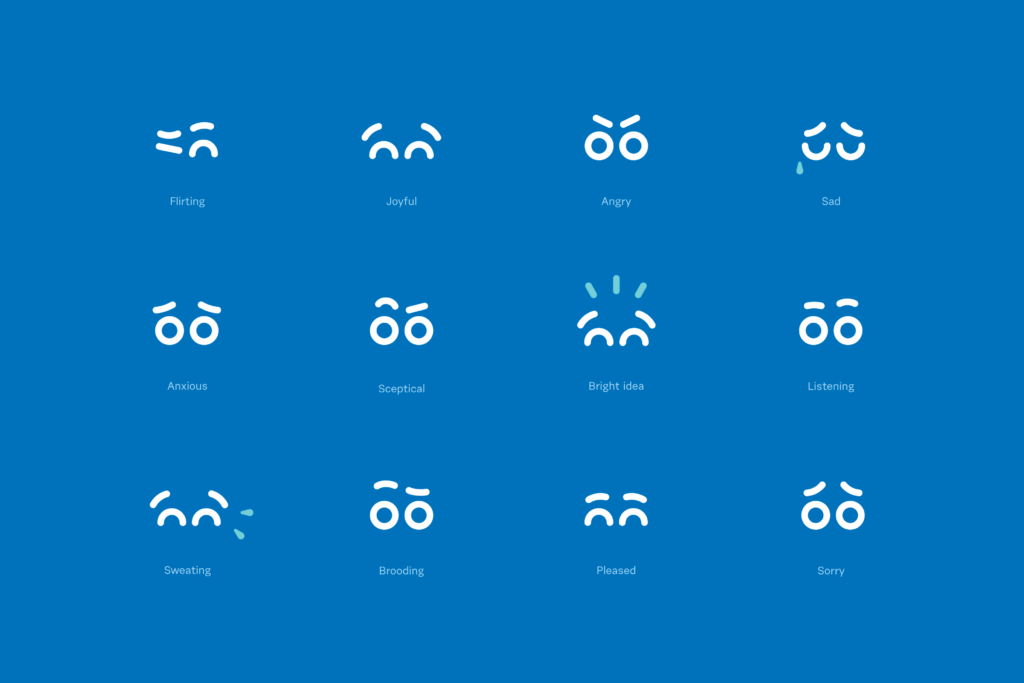
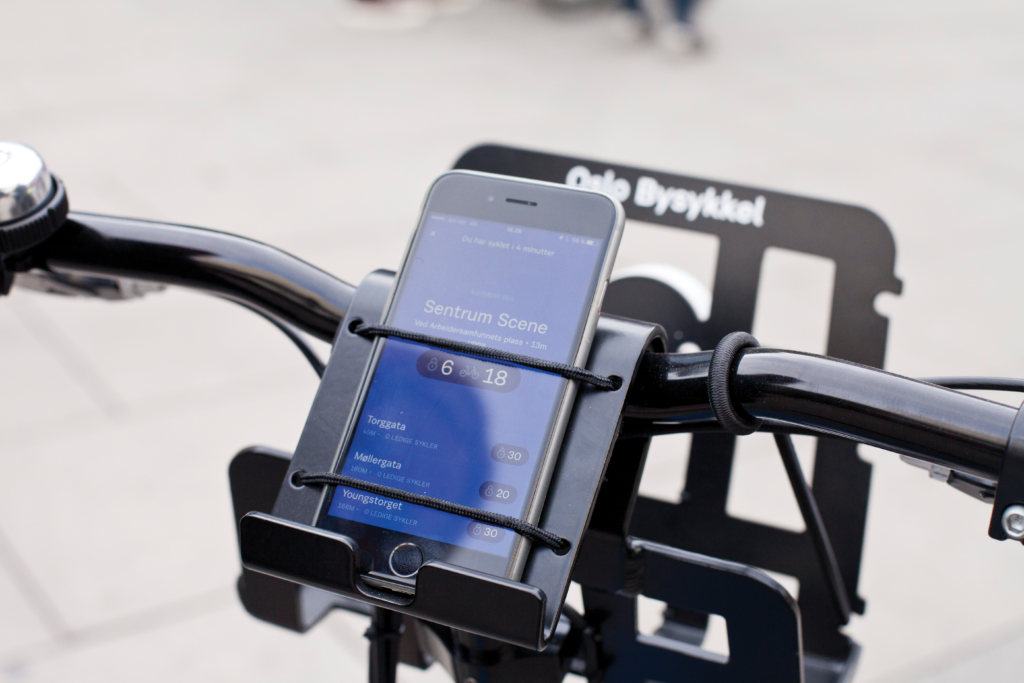

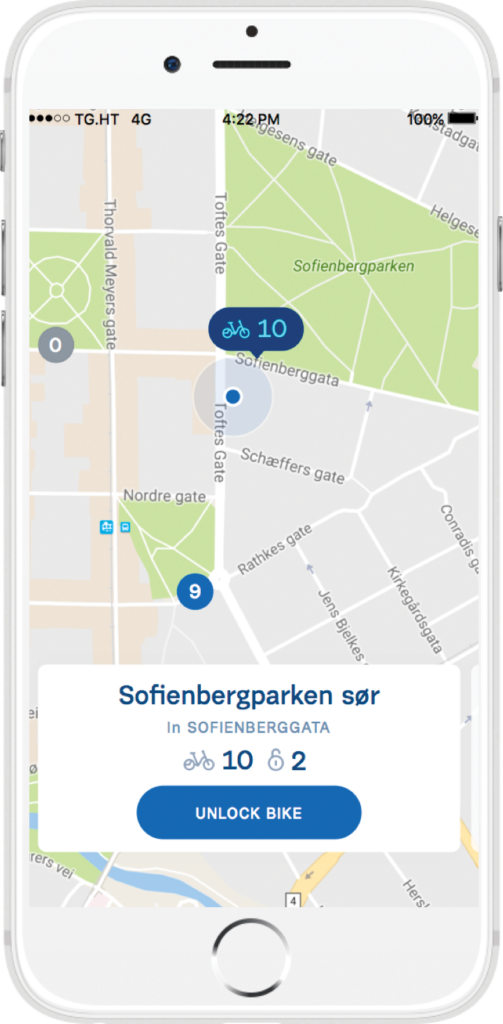
In addition to ensuring easy access, Oslo City Bike is branded and communicated as an integral element of the city’s mobility infrastructure. Users expect the type of assistance that they would receive from other forms of public transit. To meet this expectation, UIP created a customer communication strategy that emulates the interaction one might otherwise have with a bus driver or railway worker. Just like someone might walk up to a driver to ask for directions, or when they are wondering about features of the service, UIP wants to create a similar experience for city bikers.
“The differences between public transport and bikes are that, traditionally, you’ve been by yourself on a bike,” explains Høgåsen-Hallesby. “But we’ve tried to build our model so that as part of the bike experience, you can easily talk to someone through two-way communication. It’s a constant dialogue where we have opportunities to adapt to each other.” Through the chat function in the app, or through social media, users and members of the customer service team can easily communicate in real time. These interactions improve the users’ experience, and help UIP to gather information about user behavior that can be used to develop and improve the system.
The long-term UIP goal is to help transform the way people – and cities as a whole – think about traveling by public transport.
The “human element” that goes into the user experience is not just about verbal communication; it’s also made visual through the aesthetic of the designs, which were created to connect with users on a personal level. The Oslo City Bike logo is a playful blend of bicycle and emoji-like face, which can be altered to reflect a range of different emotions that are appropriate for different situations. When reporting to users through the user interface or social media about changes or disruptions in the system, the bike logo might be “sad,” or “sorry.” When there’s something positive to announce, like the opening of a new station or a special event involving city bikes, the bike logo puts on its “pleased” or “joyful” face. Not only does the expressive design add a light-hearted quality to the brand’s tone, it also helps users to imagine and interpret urban infrastructure in a different way. Sharing platforms like city bikes should not just be hardware standing around the city, hoping to get ridden once or twice a day. UIP wants its bikes to be a dynamic element in people’s daily lives that they can relate to and interact with. If sustainable mobility options feel approachable and enjoyable, people are far more likely to choose them.

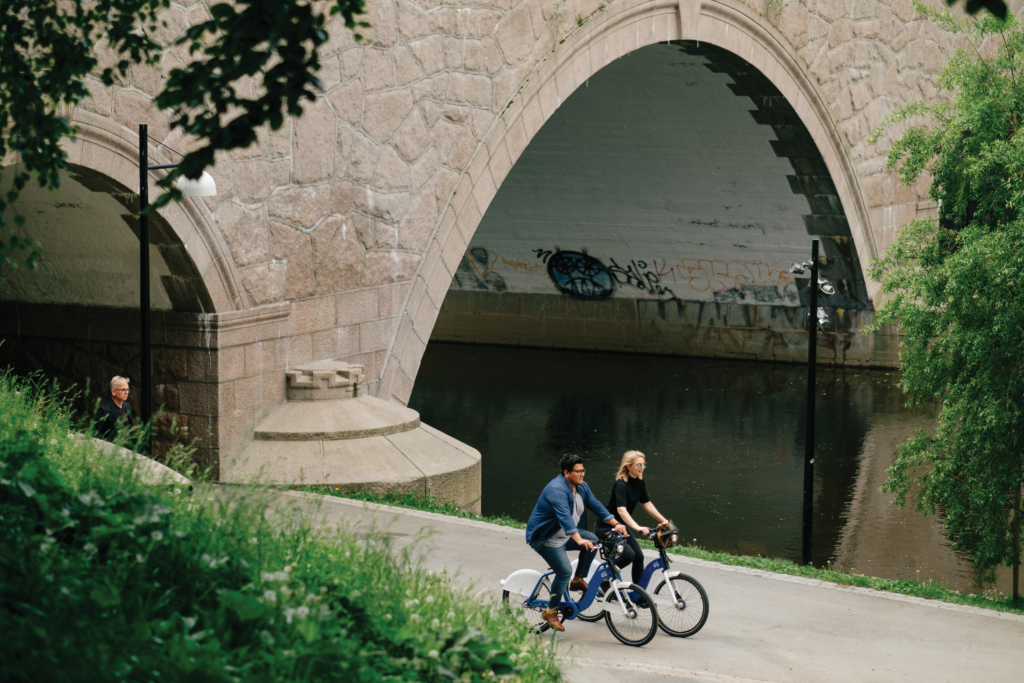
At the beginning of 2017, Oslo City Bike introduced another way for the physical product to connect with users on a human level: each of the bikes got a unique name. When city bikers walk up to a station and tap the “unlock bike” button in the app, they’re assigned a bike, which automatically unlocks for them. Giving the bikes names adds a fun element to the experience (‘Hey, I got your name on my city bike yesterday!’), and serves a practical purpose for the operations team. When a user reports that a bike is broken, or has a flat tire, he or she can easily locate and report the bike’s identity. This makes retrieving and repairing the bike quicker for the maintenance team, and creates a simpler process for the city biker as he or she engages and assists with the functioning of the system.
But it’s not always smiles, and sometimes not everything goes as planned. The company recognizes that travel – whether by bus, train, or bike – can often be stressful, and there are many frustrations that come with getting where you need to go at a specific time. And it becomes especially stressful when mobility infrastructure is not working as it should be.
“When we designed the system, we wanted to identify the situations where you often communicate with users, which is usually when there are deviations or disruptions in the system,” says Høgåsen-Hallesby. “We know that there are a lot of emotional ups and downs using public transport, so we wanted to create an identity that accommodates that. A lot of psychological thinking has gone into the service we launched. Part of our approach is to try to understand and reciprocate the emotions of users. So when you’re calm, we’re calm, and when you’re angry because something isn’t working like it should be, we’re angry with you. We’re like, ‘yes, you’re right, we have to fix this!’ That’s part of the emotional range that we’ve put into the profile, and it’s an important element of our communication process.”
The frustrations that come with travel can be eased by a good communication strategy, but UIP wants to go even further. This is why the long-term goal is to help transform the way people – and cities as a whole – think about traveling by public transport. Høgåsen-Hallesby says that the entire model of urban mobility is shifting: where city dwellers once had to adapt themselves to the movements of the transit system, technology has opened up possibilities for a new model where the system can respond and adapt to the individual’s behavior. Combining this shift in mindset with the movement toward less station-dependent bike sharing reveals a fundamental change in what role shared mobility can play for public transport overall. In an ideal model, it is the movement of people that shapes the city, and not the other way around.
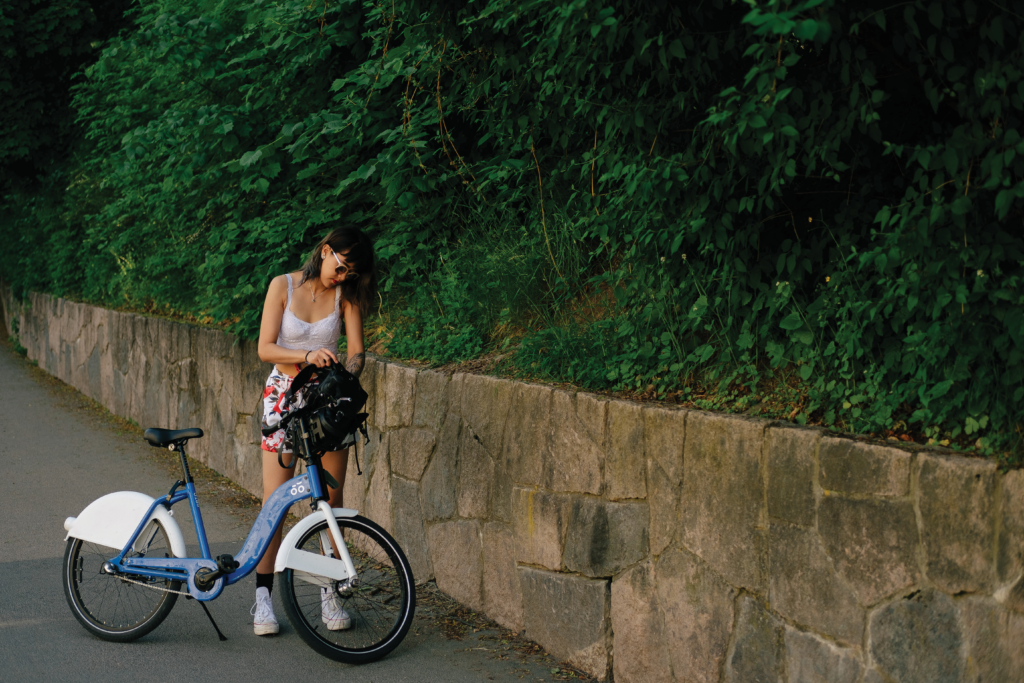
“That’s my favorite perspective on this: transportation used to be about you going to a place you don’t want to go, at a time that doesn’t fit you, to get on a bus or a train. And we can flip that around, so that transportation needs can adapt to where you are and when you want to go. A lot of this is created through a dialogue between users and technology, where you’re using it and giving it signals about how you want to use it, which improves the system.”
To achieve this shift in urban mobility, the first step is to convince many more people to use sharing platforms like city bikes as their preferred mode of transit. Operators like UIP need a large user base to collect the kind of data and research that is required to develop effective solutions. Oslo’s usage rates are so high because UIP has chosen a strategy that works to engage and attract users, while also incorporating bike sharing into the urban culture. As the company expands to more locations, their sharing platforms will continue to adapt to local cultures on street level, blending urban sharing into the fabric of each city.
The overall goal of modern urban transportation must be to guide city-dwellers away from private cars and toward more sustainable modes of mobility. Whether that means using a bike for the entire journey, or as a collective element within public transit, much of the work to be done involves educating people about how they can choose smarter travel methods. As city populations continue to rise, the urgency for more space- and resource-efficient transportation will soon become one of the most critical urban challenges.
In an ideal model, it is the movement of people that shapes the city, and not the other way around.
With high levels of usage, like the ones seen in Oslo, bike sharing helps decrease congestion and pollution. And when the operator focuses on increasing the number of trips per bike per day, like UIP does, the system’s own resources are used in a more sustainable way. Creating friendly and efficient sharing solutions can make someone’s day a little easier, and has the potential to give urban mobility a cleaner, healthier, and smarter future.